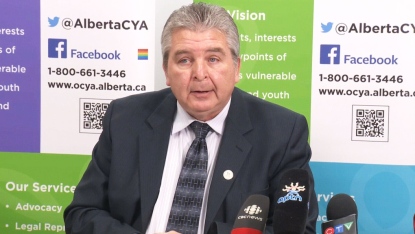
Child welfare reformers campaigned for years to secure independent Child and Youth Advocates in province-after-province across Canada. Since Canada ratified the United Nations Convention on the Rights of the Child (CRC) in 1991, self-standing government offices have proliferated in Canada’s English-speaking provinces to uphold and protect the “human rights of every child… regardless of race, ethnicity, religion, gender, abilities, birth order or other status.” Nova Scotia, as well as Quebec, were ‘weak sisters’ – outliers without self-standing offices.
Nova Scotia child welfare reformers who campaigned for a Child and Youth Advocate recently got something else – an ill-defined and bureaucratic sounding Child and Youth Commission. On March 28, 2022, Nova Scotia’s Minister of Community Services Karla MacFarlane announced that the province would be adopting a different, more restorative, less adversarial approach. Instead of appointing an independent provincial Advocate, that province would be establishing a Commission with a mandate guided by the UN Convention on the Rights of the Child and informed by restorative justice principles.
Ten years of periodic crises in children and youth care and protection and a series of reform initiatives had failed to register in Nova Scotia. Governments of all stripes – Progressive Conservative, NDP or Liberal – had, to date, shown a real aversion to giving voice to the voiceless, being proactive in identifying issues, or closing the gaps in services for at-risk children and youth.
When the needle finally moved, the Ministry of Community Services claimed that it was not a response to years of child welfare advocacy, but rather inspired by a recommendation buried deep within the November 2019 final report of the Restorative Inquiry on the Home for Colored Children.

One of the chief proponents of an independent Child and Youth Advocate, Alex Stratford was loathe to ‘look a gift horse in the mouth,’ but wondered if it passed the sniff test. “Social change” begins with advocacy, he pointed out, and it is adversarial by nature. “There’s not been an incident in our history in which change has occurred where there hasn’t been some kind of adversarial approach to ensuring that government is accountable to the people that they serve.”
Two neighbouring Maritime provinces, New Brunswick and Prince Edward Island, have fully embraced Child and Youth Advocates as the means of monitoring child and youth abuse and ensuring high standards of child protection. Since February 2022, newly-appointed NB CYA Kelly Lamrock has produced three investigative reports on mask mandates for school children, teem mental health services, and enshrining children’s rights in new child welfare legislation. The latest Child and Youth Advocate legislation in PEI is hailed by experts as the most advanced because it incorporates dispute-resolution processes, including (where appropriate) restorative justice.


The Nova Scotia Ombudsman Office, founded in response to allegations of institutional abuse in the 1960s, focuses mostly on children in care and proved unequal to the task. It has laboured on with a very limited mandate and an annual budget of only $1.8 million, a fraction of what is invested elsewhere. Back in 2015, Nova Scotia spent only $400,000 of its $1.7-million budget investigating child and youth complaints, less than one-quarter of the amount expended in Newfoundland and Labrador.
The current Nova Scotia government wants no part of having to respond to ongoing and unpredictable investigations into gaps in child and youth at-risk services. “The Commission,” Community Services spokesperson Christina Deveau advised me “will take feedback on an ongoing basis, and monitor system improvement, to illustrate its effectiveness and build trust in the system.”
It sounds well intended, but falls far short of establishing a Child and Youth Advocate, completely independent of the government and reporting to the Legislative Assembly. So far it looks very much like a potential obstacle to a more robust approach with a full mandate to identify the cracks, investigate serious cases, and take the lead in advocating for changes in child welfare and youth-at-risk policy and services.
Why did the Nova Scotia government opt to create a Child and Youth Commission rather than appoint an independent provincial Advocate? Is it a step forward or a potential obstacle shielding Community Services from regular, ongoing, independent public scrutiny? Will the new agency be pro-active or reactive in its orientation? If the modus operandi is inclusivity, trauma-informed practice, and restorative justice, will we ever succeed in rooting out the worst forms of physical/emotional abuse, cyberbullying, and sexual assault affecting children and teens?








